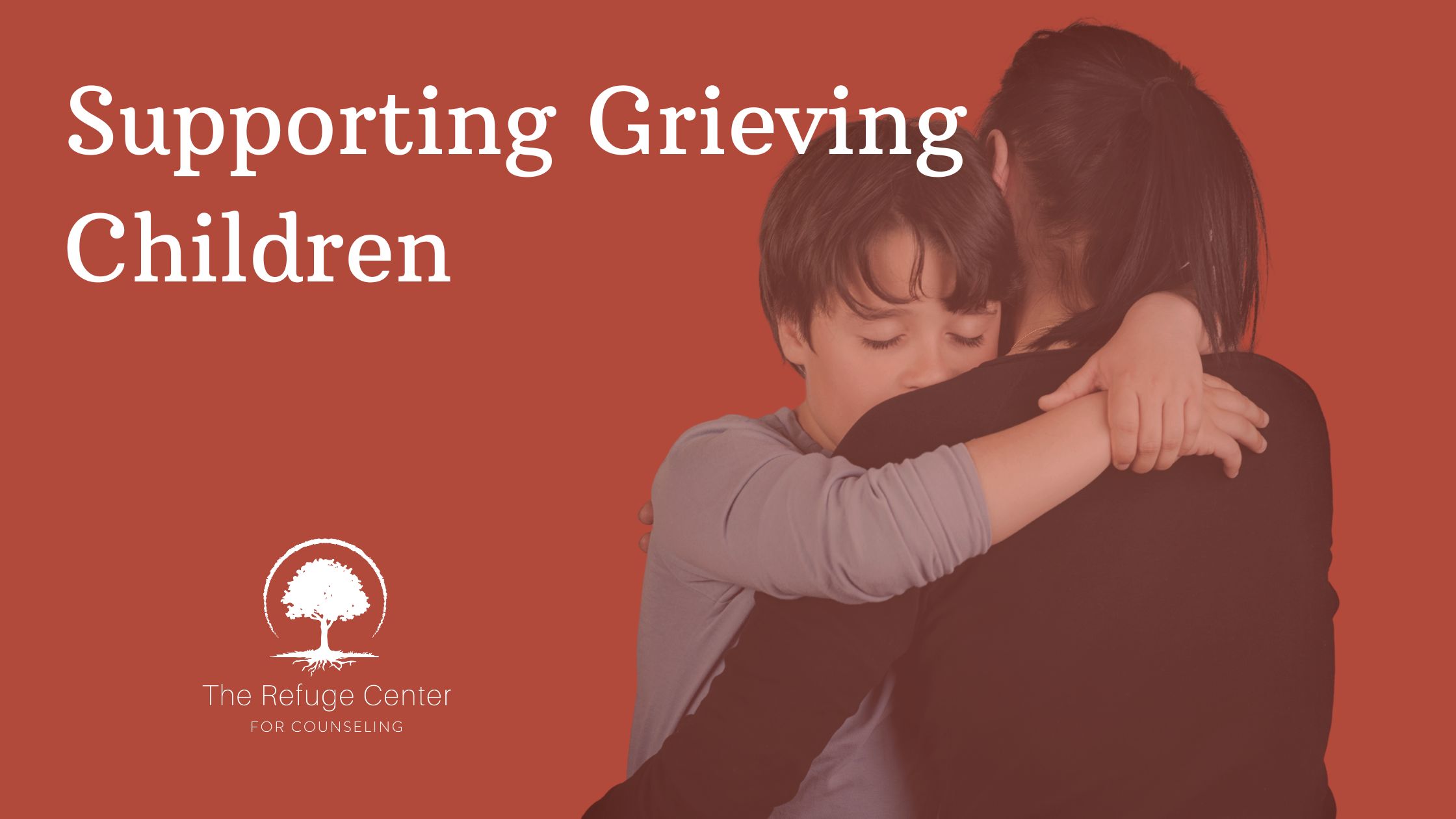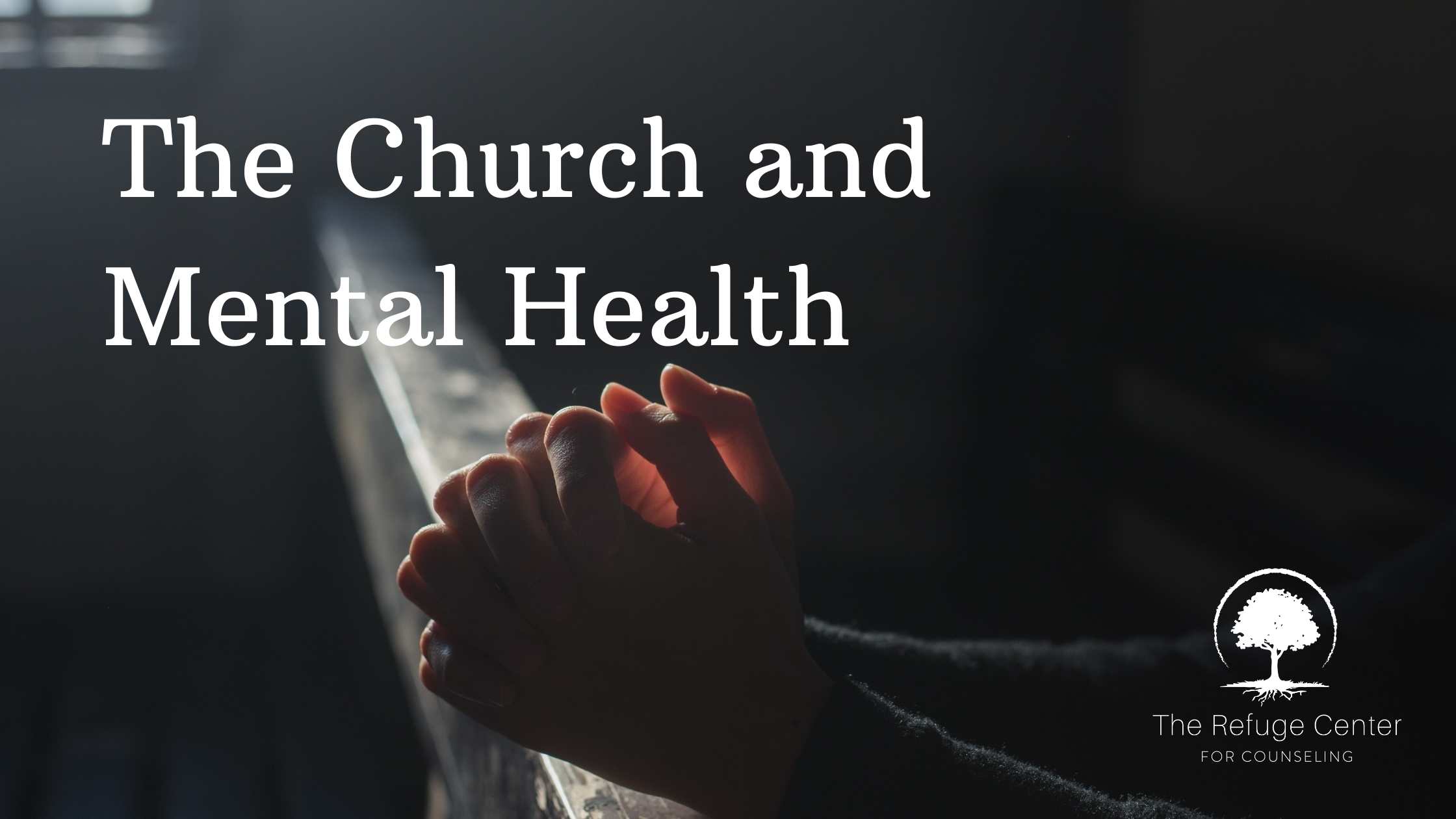If you imagine people who need to take care of their mental health, who comes to mind? Seriously. Chances are, you pictured adults in your life who are unstable or seem off in some way.
You’re right. We can all name at least one adult who needs to take care of their mental health, and we can include ourselves in the mix, too! Paying attention to our mental health is crucial for us to function positively in our relationships at work and at home. Who doesn’t appreciate a relationship with an emotionally healthy person?!
The truth is, we are in a mental health crisis. And the last few years have magnified the depth and reach of this crisis. Wounds that were tucked away beneath the surface refused to remain hidden. Fears reared their ugly head. And anxiety came roaring in with a vengeance.
A mad, wretched, heartbreaking, overwhelming vengeance.
Alright, now think again about the people around you who need mental health care. How many of those people are interacting with children on a regular basis? How many of them have children?
Our children, your children, your students, your nieces, nephews, and neighbors are in pain. They are carrying the weight of an incredibly broken world on their young, never-equipped shoulders. And so much of this weight was placed there by adults who were meant to protect and support them.
We must stand in the gap to care for these children. From toddlers to teens, it must be us.
And that is exactly why The Refuge Center held “Equip,” our Live Intentionally Speaker Series. We want to help adults gain the tools needed to address the child and teen mental health crisis.
We had six amazing speakers share on several vital topics to enrich our understanding of the struggles that kids in our lives are battling every day. So, if you missed it, you’re in luck because we’re going to tell you what it was all about …
Recognizing Trauma in Children and Adolescents (Alice Stricklin, LMFT)
A lot of the trauma our kids are dealing with has occurred in the last three years. The effects of trauma don’t have to last a lifetime. It’s our responsibility to help children and teens heal from this trauma.
In order to understand trauma, we have to talk about the three main parts of the brain—primal, limbic, and cortical. The primal brain basically operates to keep us physically alive. The limbic brain is the control center for emotions and attachment, it’s basically our alarm center. Lastly, we have the cortical brain. This is where you can find impulse control, thinking, learning, and language. But guess what? Our cortical brain doesn’t fully develop until we are twenty-five. (This probably sheds some light on some of the uhh not-so-wise decisions made in your early twenties, huh?)
In light of that, think about what it must be like for a kid to experience trauma with a brain that is nowhere close to being mature enough to process it. When you watch a child having some major reactivity to a situation, you are witnessing their trauma response.
Traumas can be put into three categories: big T, little T, and complex trauma.
The big T traumas are the more obvious traumas that put your life in danger or the life of someone caring for you. Did you know that when a child watches someone like a parent being threatened, that child feels like they might die, too? They experience the harm even when they’re not directly harmed.
Little t traumas are non-life-threatening experiences. This could be emotional neglect, humiliation, bullying, loss of a pet, or an injury.
Complex traumas are made up of multiple life-altering incidents in a short time. This results in the child learning that they can’t trust people who should be caring for them.
Kids respond to these traumas with a fight, flight, freeze, or collapse and submit (a.k.a. fawn) response. Fight response is going to be an obvious response because it will be strong. You can expect fighting, yelling, wailing, or belligerent behavior. The flight response looks like fleeing the situation. Freeze is another self-explanatory response. The child can’t move and they disconnect from the situation and their body. When a child collapses and submits, it’s as if they become smaller, a natural peace floods over them as they completely disconnect from what’s happening to them or around them.
Nobody can process trauma when perceiving a threat. Our brains can process trauma when we’re in a safe space. Young kids typically freeze when they’re not in a safe space. Older kids tend to go to the fight or flight response.
How Can We Help?
We have to work within the brain’s natural processing. This means recognizing when it’s a trauma behavior or just a bad behavior and also seeking to understand rather than fixing by asking questions and validating. We can also help by removing parental stressors to create more peace within the home. Peace in the home gives the child a better sense of safety.
Warning Signs for Self-Harm & Suicidal Ideation (Amanda Fisher, LMSW)
When children self-harm, they are expressing internal feelings in an external way. Self-harm may manifest in cutting, burning, scratching, etc. These kids would tell you that they either feel numb or they feel too much. They may be using self-harm as a means of controlling or punishing.
If a child is experiencing suicidal ideation, it doesn’t include the actual follow-through of suicide. This happens when kids regularly think about the act of suicide. This can be slippery to catch because these kids may never talk about it out loud. They may be journaling, drawing, or watching shows revolving around suicide.
Unfortunately, there are a few myths floating around regarding suicide. It just isn’t true that people who want to do it can’t be stopped, that talking about it makes it worse, or that they don’t warn others. None of those things are truths.
There are warning signs for both self-harm and suicide. Learn the physical symptoms and behavioral patterns that indicate risk.
Warning Signs of Self-Harming
- appear withdrawn, or more quiet or reserved than usual
- stop participating in their regular activities
- have rapid mood changes
- get angry or upset easily
- have had a significant event in their lives, e.g. a breakup with significant other
- suffer poor academic/school performance when they usually do very well
- exhibit unexplained bruises, cuts or scratches
- wear clothes that are inappropriate for the weather, e.g. wearing long sleeves on hot days.
(Note: This list provides some examples but is not exhaustive and should not be used for diagnostic purposes.) Sources: Klonsky, E. , et al. (2011)
Warning Signs of Suicide
- Talking about suicide, death, and/or no reason to live
- Preoccupation with death and dying
- Withdrawal from friends and/or social activities
- Experience of a recent severe loss (especially a relationship) or the threat of a significant loss
- Experience or fear of a situation of humiliation of failure
- Drastic changes in behavior
- Loss of interest in hobbies, work, school, etc.
- Giving away prized possessions
- Unnecessary risks; reckless and/or impulsive behavior
- Loss of interest in personal appearance
- Increased use of alcohol and/or drugs
- General hopelessness
- Recent experience humiliation or failure
(Note: This list provides some examples but is not exhaustive and should not be used for diagnostic purposes.)
The most helpful things you can do are to listen without shock, check-in and be available, offer zero judgment, give no lecture or debate, refrain from asking why, be direct, remove any means for committing the act, and seek professional help.
You can call the suicide/crisis hotline at 988 or text “hello” to 741741. You can also go online at findhopefranklin.com. Or you can personally go a step further and learn QPR suicide prevention training.
Emotional Intelligence for Young Athletes (Ben Zobrist, retired MLB player)
Stress and trauma extends beyond the walls of our homes and schools … and it bleeds all over the courts and fields that are meant for play and healthy competition. After thirty-three years on the field, Ben Zobrist has a wee bit of insight regarding the emotional intelligence of athletes.
Alrighty, raise your hand if you’ve ever found yourself a tad emotional during a competition? Maybe even kicked out of a game? There is something about competitive sports that brings out our best … and our worst. The act of regulating our emotions seems to get checked at the door as soon as we arrive at the field.
Emotional intelligence is the ability to perceive, understand, and manage your emotions both for yourself and for those around you. Adults are often severely lacking in emotional intelligence. In light of that, think about being a child without a fully developed brain. It is very challenging for kids to practice emotional intelligence.
Here’s the thing. We think of competition as a source of fun and entertainment. But the reality is that money is involved. Whether we tell them or not, kids know that travel or club sports are not free. The equipment, travel, and game fees all add up. And the parents are not the only ones who feel it. Kids carry this weight on their shoulders much more than we realize. That’s a problem.
Speaking of problems, there are quite a few to be aware of if we want to do better.
Problems in Youth Sports
- Unhealthy expectations. Kids are expected to excel in school and sports. It’s too much too early. The pressure is too excessive for kids—whether they’re eight or eighteen.
- Unhealthy adult involvement. This looks like hyper-criticism on one side of the coin and hyper-esteem on the other. Tearing them down while driving in the car, or building them up and over-inflating their sense of self around sports.
- Unhealthy coaches. Grown adults who have very low emotional intelligence are not required to divulge this before teaching our kids the proper batting stance or perfect follow through on a jump shot. These coaches can have a very detrimental effect on the hearts and minds of kids.
- Unhealthy environments. The environment kids practice and play in should be supportive and encouraging. It should not be a source of toxic stress and pressure.
- Toxic teammates. Sometimes kids are sitting on the bench, playing on the field, and riding to games with teammates who bully them every time they are out of earshot from the coaches.
- Toxic attachments to the game. When kids become obsessed with their sport and their performance, it can take up too much space in their head. Their lives are imbalanced.
Imagine being passionate about a sport that also gives you shame and anxiety. Imagine wanting to play so badly that you try to shove down all the anxiety you get from toxic bullying teammates and coaches. And imagine having a parent who is vicariously living through you every time you’re up to bat, stand at the freethrow line, or try to scramble in the pocket.
Now imagine being a kid who’s trying to mentally and emotionally wade through all of that without somebody to co-regulate them or process all the thoughts and feelings.
What Young Athletes Need
- Young athletes need a safe space to exist without fear of rejection or shame if they fail.
- They need the space to be human and have feelings about their performance.
- They need to be seen for who they are.
- Give them language to verbally express their feelings by using an emotion chart
-
- Normalize and destigmatize having feelings
- An adult who is there to co-regulate their emotions
- A common understood mindset of growth over performance
So … How Do We Help Our Young Athletes?
- Do your own emotional work. We cannot teach what we don’t embody. We can’t teach kids to handle emotions when we don’t know how to handle our own. And we definitely won’t be able to co-regulate if we are not emotionally stable.
- We have to be sure we are showing interest in more than their sport(s)
- Recognize the effort your athlete puts into the sport
- Create healthy boundaries around their competition
- Give your kids/players common language to express emotions
- Ask self-awareness questions for before, during, and after the competition or practice
- Be approachable
- Show them that who they are is not what they do
- Be empathetic about their failures. Allow them to sit in their feelings
- Appropriate their competition over the rest of their life. In the grand scheme of things … What will truly matter?
None of this will matter if we as caregivers and coaches don’t step up and commit to our own mental health so we can be fully present and pour positive things into the lives of young athletes.
Are Screens Destroying Your Family? (Stacey Jagger, LMFT)
If you were sitting in a chair across from Stacey, her answer to that question might very well be a resounding YES, screens are absolutely taking a toll on your family.
Think about a favorite memory from childhood. In that memory, your senses are intimately involved. Our memories are about connection. And that connection makes us feel loved.
Kids today feel less connected because of social media. That means they fell less love. Screens are insulating us from connecting with others. In both their minds and bodies, kids get an adrenaline rush from screens. They are not developmentally capable of managing the adrenaline and sorting out the real from the virtual. This is a recipe for mental and emotional disaster.
Convenience is ruling our lives.
Approximately 20% of American kids enter school developmentally delayed. One out of six children have a diagnosis of mental illness with child aggression and unmanageable behavior, and it is increasingly becoming the norm.
Studies show that kids spend over seven hours a day in front of electronic media. There is a definite link between developmental and academic disorders to excessive screen time. As a result, children struggle to regulate their emotions, they can’t get to know themselves or process feelings, they are losing the ability to process emotions naturally, they are experiencing social anxiety in simple face to face interactions, and they are unable to maintain eye contact or focus for more than thirty seconds.
This is becoming a world-wide crisis. Kids need to interact with the outside world or they will continue to deal with nervous system deregulation.
The Solution: 30-Day Blackout
Before you freak out and stop reading, take a deep breath and don’t panic. There are concessions for work and school projects, the bare-bones necessities.
Should you take on this challenge, you can expect the first five days to be hellish. Days six and seven are what Stacey likes to lovingly call “The Door of Boredom” and “The Pit of Despair.” It’s at this point that kids are finally willing to do things they were unwilling to do before.
When you do this, the brain and autonomic nervous system have a chance to reset. Their capacity for connection increases. Kids can actually believe you when you are talking to them. This part alone is reason enough to consider it, right?
Modifications
- All gaming and social apps must be taken off of devices
- Work is to only be done during regular working hours
- Homework is done in a place like the kitchen
- From the evening until the morning is to be considered family time
We must shift our mindset to regard screen time as the dessert rather than the main course. The main course should offer us opportunities for connection leading to emotional regulation, co-regulation, love, and security.
Grief and Loss with Young People (Caitlin Coile, LPC-MHSP)
The reaction to grief and loss can come in many forms, some of which are often unexpected. Anger, denial, acceptance, frustration, contentment … All of these can show up with grief and loss.
As adults, we struggle to find our path through the trauma of grief and loss. For kids, this journey is completely chaotic, and they usually feel stuck in it. Huge thoughts and feelings are roaring around inside of them and they don’t have the maturity or tools to process all of it.
So we have to watch them closely, keeping in mind that things may not look the same for kids as they do for adults. Watch how they are playing and interacting with others and be prepared for their grief to come in bursts.
Our Role Is to Be Present
The adults in a grieving child’s life must act as their safe place, their soft place to land—whatever that looks like. We need to talk through their grief in a developmentally appropriate way. Depending on their age, they may not understand the permanency of the situation. When it comes to kids and loss, euphemisms are not the way to go because they add to their confusion.
So, we’ve got to provide opportunities to help kids explore their grief. When we do this, it’s as if they have permission to build a life around their grief. Doing this doesn’t ignore their grief or loss, it makes room for it without letting it overwhelm their entire life.
Coping
There are ways to help our kids cope with this life trauma. You can create a tangible representation of their loss to help them cope. It honors the memories they have around their loss. This can look different for each kid. It could be a bracelet with a bead representing good memories. It could be writing or coloring. It could even be a collection of small stones. It just needs to be something that serves as a visible reminder.
Kids often struggle to talk about what has happened. (And frankly, caregivers don’t always know what to say.) Reading books together is a great way to start a conversation and engage in a meaningful dialogue.
Reading Suggestions
Ages 0-8: When Dinosaurs Die, I Miss You, The Invisible String
Middle School: The Memory Box, One Wave at a Time, A Stone for Sasha
High School: When a Friend Dies, The Grieving Teen, Grief Recovery for Teens
You can find additional resources for helping kids deal with grief and loss at the Child Mind Institute, The Dougy Center, The National Child Traumatic Stress Network, and, of course, The Refuge Center.
The Refuge Center has a needs assessment that we offer for youth pastors. If you are interested, we will be hosting youth pastors and helping them learn ways to better support their young people on 10/27/22 from 1:00 to 2:30 and 11/10/22 from 10:00 to 11:30.
Adverse Childhood Experiences “ACEs” Scores (Dr. Thomas Cabell)
It is painfully clear that the last few years have thrown many of us back into our stories. We’ve become reacquainted with the things we carry deep inside.
“The past is never dead. It’s not even past.”
—William Faulkner
There is a reason for this. Your limbic system never leaves you, and this is where our emotional core resides. And that emotional core is directly linked to the immune system, which lives mainly in our gut. So when you experience something awful, you might say you feel like you’ve been kicked in the gut, and wouldn’t you know it? There’s a reason for that, too.
Our five senses are filtered through the limbic system. This is one reason why environment makes such a huge impact on how we experience trauma. To add to that, trauma is essentially like a separation from our body and emotions, a disconnection from ourselves. Trauma isn’t what happens to us but what we hold inside in the absence of an empathetic witness.
Stress in Relation to Trauma
Stress comes in three main forms—positive, tolerable, and toxic.
- Positive stress is essential for a healthy environment.
- Tolerable stress is stress that lasts for a longer amount of time but still has a time limit and is often met with adaptive coping skills
- Toxic stress is strong, frequent, pro-longed adversity, such as: physical abuse, emotional abuse, neglect, etc. These stressors can continue for years.
Prolonged activation of a stress response interrupts brain development and leaves a fingerprint on the physical structure of the brain. We cannot ignore stress! Its effects will make undeniable marks on us and even go so far as to shorten our lifespan and saddle us with long-term health problems.
Society tends to pay more attention to physical abuse—which is a special kind of hideous—but did you know that emotional abuse is more taxing to the body? And this includes when a child witnesses their parent being emotionally abused. Their bodies feel the threat.
Kids need an adult buffer to combat this stress. For countless kids, emotional abuse has become a regular occurrence. So as scary and awful as it may be, it also feels like their norm. Having an adult who is present to process what is happening helps those children to not feel alone in their trauma. An emotionally healthy adult can help a child understand that emotional abuse is not okay.
When kids experience trauma after trauma, their immune systems never gets to shut off. The stress keeps their guts churning with anxiety. So, sometimes when a child is telling you their belly hurts but they have no other symptoms, it’s because their anxiety is in high gear. This may be especially prevalent at bedtime.
What’s more, we now know that this heavy anxiety affects our hearts. The heart will actually give off signals to indicate that we need to pay attention to what is happening to our body. Toxic stress works its way from our gut, to our brains, and to our hearts.
In a nutshell …
Adverse childhood experiences are the single greatest unaddressed health threat facing our nation today.
And the occurrence of these experiences has doubled in the last two years.
So, instead of asking the question, “What’s wrong with you?” we need to start asking, “What happened to you?”
Ugly things are happening to our kids. We must do better. We must help the children around us. Their future depends on it.
In the end …
We need to take great care regarding the hearts of the children walking the halls of our homes and schools, playing on our ball fields, and showing up in our offices. We can teach kids how to navigate their feelings and communicate by giving them language to use and reassuring them not to fear any of their feelings. This is all part of being available co-regulators.
At The Refuge Center, we look at trauma like this: Trauma is not so much what happens to me, it’s what happened to me in the absence of an empathetic witness.
If we want the children in our lives to thrive, we must be willing to do the work to make it happen. We must be willing to embrace the change they need.
By Shelby Rawson
Shelby is a local writer, ghostwriter, and editor by trade. She avidly supports the mission of The Refuge Center and its pursuit to intentionally care for the mental health of our community.
Share this post
About Us
Who We Serve
Get Involved
-
Connections Lunch
-
Sponsorship Opportunities
-
Volunteer
-
Internship Opportunities
-
Post Master’s Fellowship Program
What’s Happening
Follow Us
Instagram
Facebook
Twitter
Youtube
Pinterest
The Refuge Center for Counseling is a 501c3 nonprofit organization (20-3831943). We are also a United Way of Williamson County Partner Organization.






